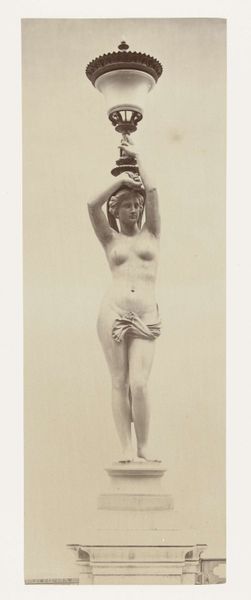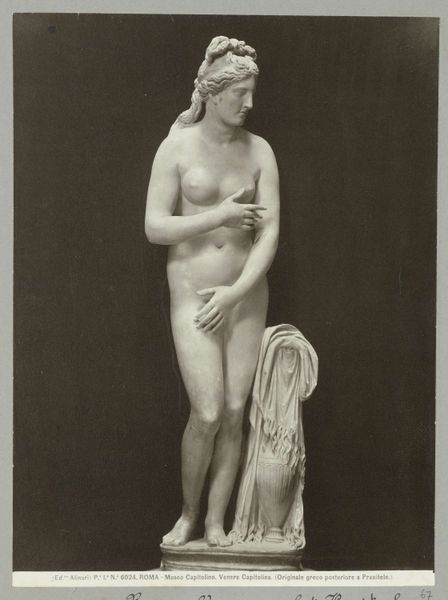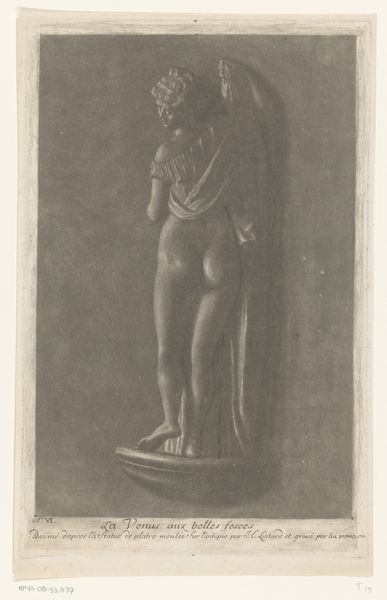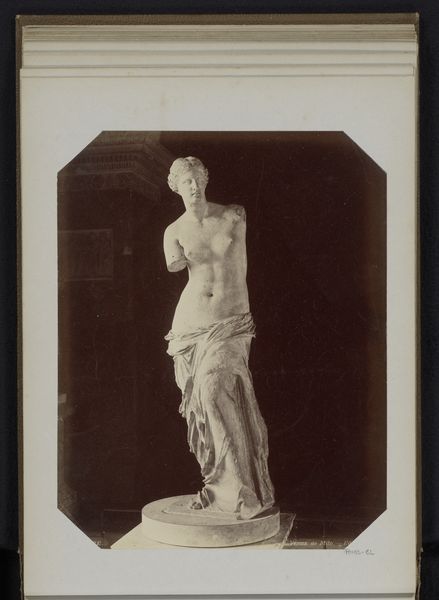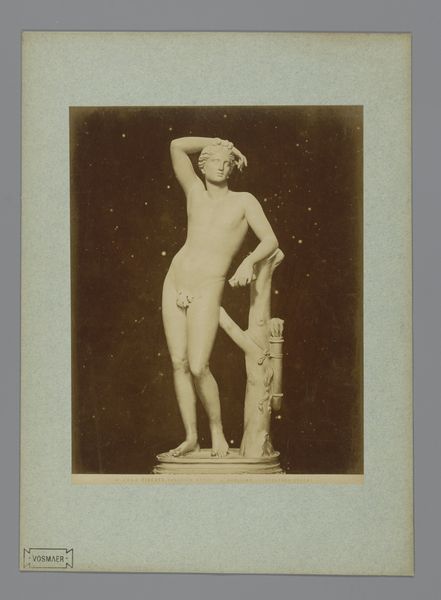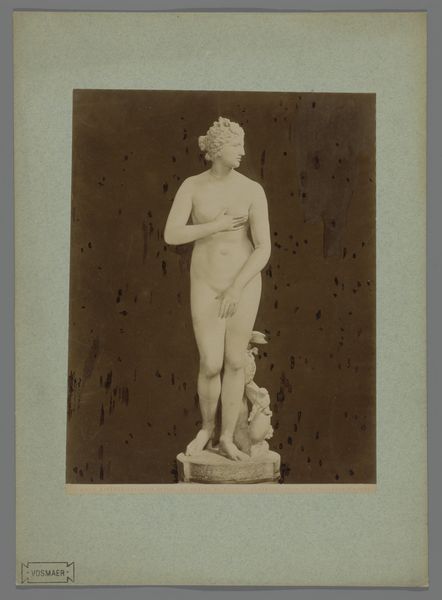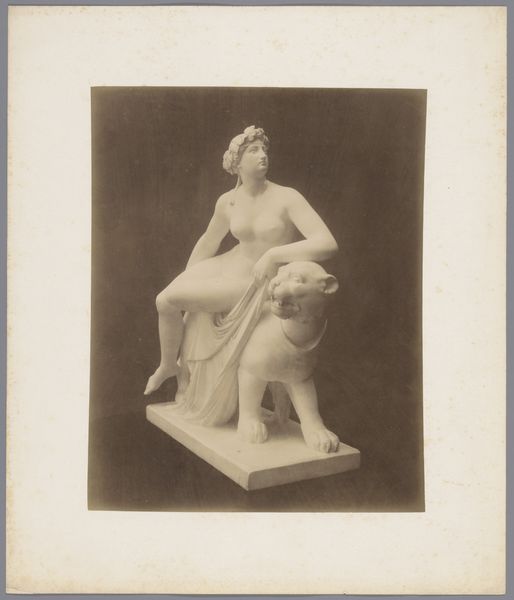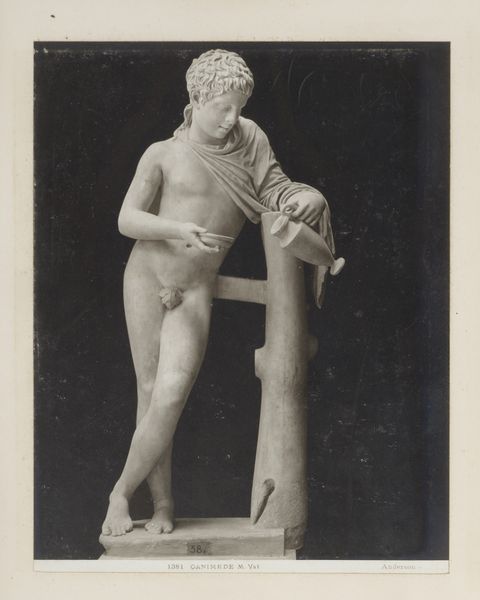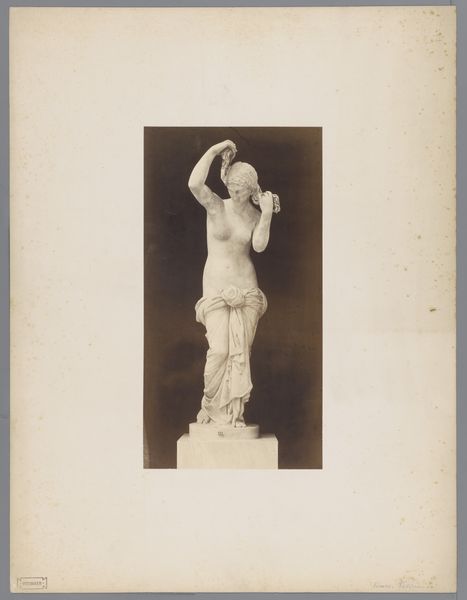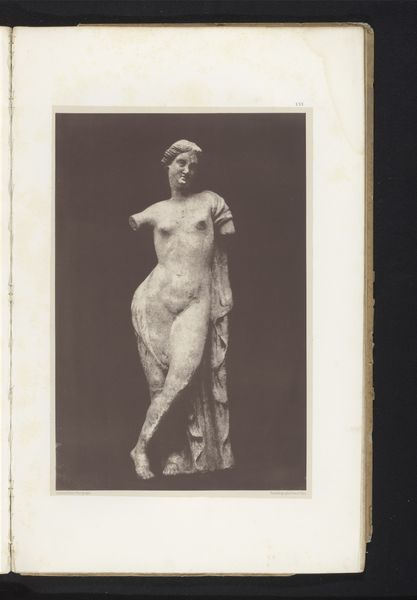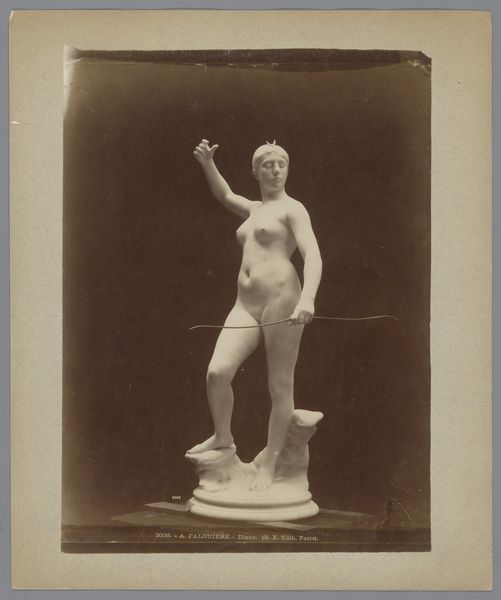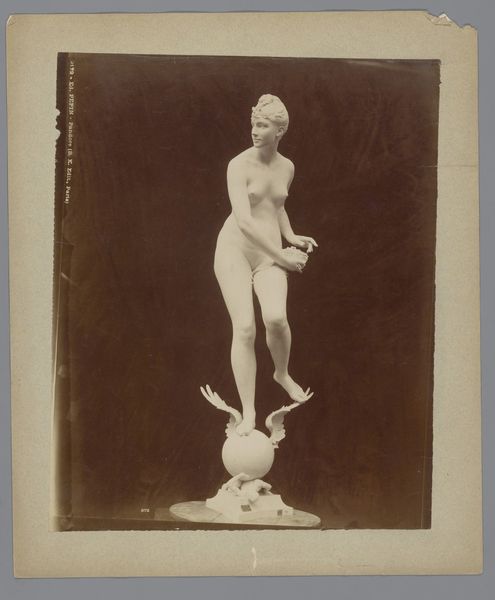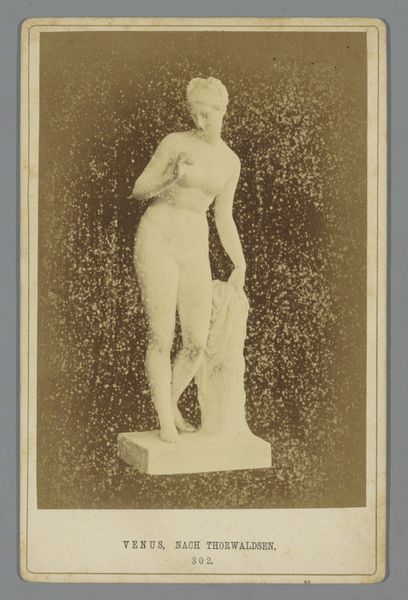
photography, sculpture, marble
#
neoclacissism
#
photography
#
female-nude
#
sculpture
#
history-painting
#
marble
#
nude
Dimensions: Image: 8 3/8 × 6 5/16 in. (21.3 × 16.1 cm) Mount: 13 3/4 × 9 13/16 in. (35 × 25 cm)
Copyright: Public Domain
Editor: This is "Greek Slave," a marble sculpture by Hiram Powers from 1851. The smooth, cold feel of the marble, the way it’s been so carefully shaped... it’s striking. How should we think about the conditions of its production and what they say about art at the time? Curator: Excellent question! We often think of Neoclassical sculpture as purely aesthetic, divorced from labor, but consider the quarries, the transport of immense marble blocks, the teams of artisans needed. All that physicality contradicts this pristine image. Editor: Right! So it wasn't just Powers alone, in his studio? Curator: Precisely. This idealized form masks an intensive, even exploitative, production process. Who mined this marble, and under what conditions? Where did the capital come from to undertake this kind of project? These details matter. It was also endlessly reproduced as inexpensive Parian ware, opening up the sculpture to mass consumption by the Victorian middle class, turning it into a decorative object in the domestic sphere. This shifts the conversation entirely from one of "high art" to commercial product. Editor: I never thought about that connection between fine art and mass production! The labor that goes into just getting the material... I’m going to start looking at sculpture completely differently. Curator: Exactly. Focusing on the material realities, we gain a much richer, more complex understanding of not just "Greek Slave," but the entire art world in the 19th century.
Comments
No comments
Be the first to comment and join the conversation on the ultimate creative platform.
